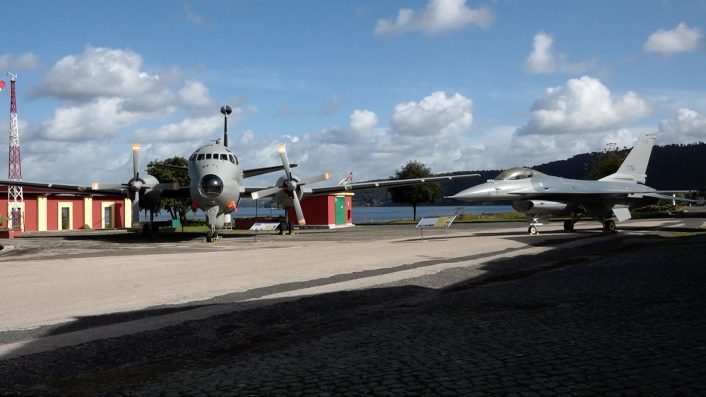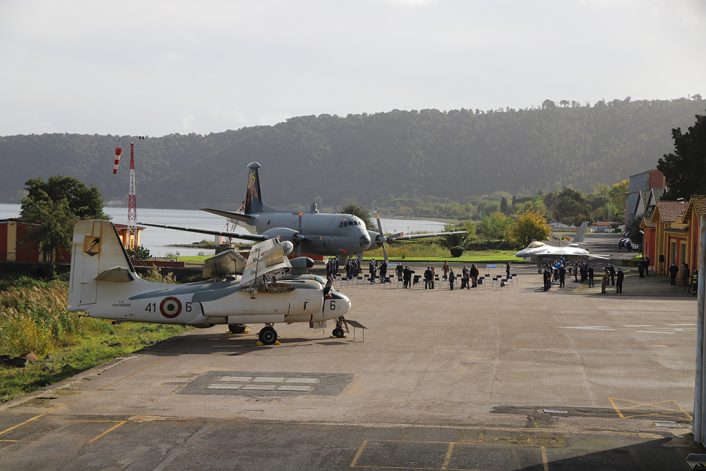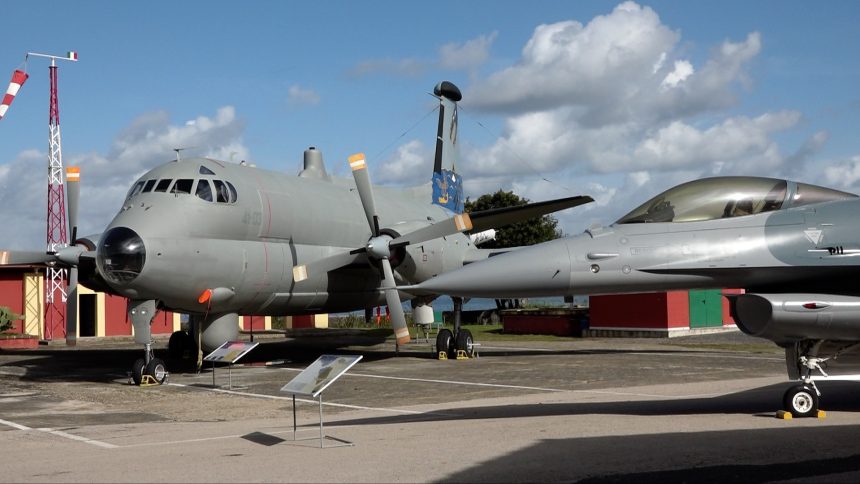The BR-1150 Atlantic and F-16 Fighting Falcon join the outstanding collection of the Italian Air Force Museum.
Located some 25 kilometers to the northeast of Rome, the Museo Storico Aeronautica Militare – Italian Air Force Museum, is the most important aviation museum in Italy. The collection, that includes relics and parts of airships, hydro-racers which took part to the Schneider Cup competition, WWII fighters and bombers, along with more recent jets, like the legendary F-104 and the MB.339 of the Frecce Tricolori, is hosted inside the hangars built on the western side of the Bracciano Lake, in the ancient seapane station of Vigna di Valle, the oldest Italian aviation site, a place that later became the first Experimental Aviation Shipyard.
The collection of Italian pieces continues to grow: new aircraft are constantly restored and periodically added to the collection that is a real must-see for all aviation enthusiasts. For this reason, the Museum has recently undertaken works to renew its exhibition facilities in order to allow visitors to better appreciate the aircraft and relics that tell the history of military flight in Italy and its leading figures.
The Museum is scheduled to open again to the public after the works on Oct. 31, 2020. Ahead of the opening, the Italian Chief of Staff, Gen. Alberto Rosso, took part to a small ceremony held at the Museum on Oct. 28, an event that also provided the opportunity to unveil the latest two aircraft to enter the collection: the F-16 Fighting Falcon and the Breguet BR-1150 Atlantic.

The Italian Viper
Under Peace Caesar program, the Italian Air Force purchased a total 45,000 flying hours between 2004 and 2010 (then extended to 47,000 until the first half of 2012), with all the necessary logistic support, of a fleet composed by 30 F-16A Block 15 ADF (Air Defense Fighter) upgraded with the “Falcon Up” and “Falcon 2020” modifications, 3 F-16B Block 10 OCU (Operational Capabilities Upgrade) and a single F-16B ADF. Another 4 twin seats airframes would have been delivered to the ItAF to be cannibalized for spare parts. The aircraft were leased to act as “gap fillers” between the obsolete F-104 Starfighters and the Eurofighter Typhoons.
The first batch of F-16s were returned to the U.S. in 2010.
In 2011, during the Air War in Libya, the Italian F-16ADF of the 18° Gruppo (Squadron) flew more than 1,559 flying hours and 348 missions since the early stages of US-coordinated Operation Odyssey Dawn begun on Mar. 19, 2011.
Flying also in a “heavy” configuration, that included two drop tanks, four AMRAAM (Advanced Medium Range Air-to-Air Missiles) and two AIM-9L Sidewinders, the Squadron’s “Vipers” escorted the first Italian SEAD packages inside the Libyan airspace. With the beginning of NATO’s Operation Unified Protector at 06.00GMT on Mar. 31, 2011 and until the end of the air campaign at 23.59 GMT on Oct. 31, 2011, the Italian F-16s, alongside all the other Italian Air Force assets under the Task Group Air “Birgi”, flew air defense and combat air patrol missions required to enforce the No-Fly Zone over Libya and to ensure the air superiority needed to successfully accomplish the assigned mission.
Furthermore, in connection with the Libyan crisis, the 18th Squadron ensured the Quick Reaction Alert service at an heightened level of readiness with F-16s ready to take off in few minutes in order to intercept and face any suspicious aircraft.
The Italian Vipers, were returned to the to Davis-Monthan AFB, Arizona, where the aircraft were “cocooned” and kept in storage by the 309th Aerospace Maintenance and Regeneration Group (AMARG) at the local “Boneyard” in May 2012.
The aircraft on display at Vigna di Valle museum is the one that has operated in the Italian Air Force as MM7251. Flown by the 23° Gruppo of the 5° Stormo, this was the first Italian special colored F-16s, prepared to celebrate the 90th anniversary of 23rd Squadron in 2008.

The Atlantic
The BR-1150 Atlantic on display at the Museum is the airframe MM40118/41-03.
Retired on Nov. 22, 2017 with a final flight from Sigonella, home of the 41° Stormo (Wing) – the last unit to operate the BR-1150 – to Pratica di Mare, was moved to the museum, located on the Bracciano Lake, to the northwest of Rome, using an Erickson S-64F Skycrane heavy-lift helicopter belonging to the Corpo Nazionale dei Vigili del Fuoco (Italy’s National Firefighters Corps) and operated for this mission by the European Air Crane Company (EuAC) on Oct. 18, 2018.
The first of 18 MPA (Maritime Patrol Aircraft) with ASW (Anti-Submarine Warfare) capabilities Atlantic aircraft, the BR-1150 MM40108 was taken on charge by the Aeronautica Militare at Toulouse, France, on Jun. 27, 1972. On the very same day, after a stopover in Nimes, France, the aircraft landed at Sigonella, for the very fist time at 16.25LT. The retirement came after 45 years and almost 260,000 flying hours (actually 258K) logged by the fleet of MPA.
Flown by a mixed Air Force/Navy crew of 13 people the Italian Atlantic aircraft carried out Maritime Patrol and ASW missions, Maritime SAR (Search And Rescue) support and, throughout their career took part in hundreds exercises: from Dawn Patrol back in 1973 to the Dynamic Manta in 2017, the BR-1150 have played a role in the Display Determination, Dog Fish, Vento Caldo, Daily Double, Mare Aperto, Tridente, Deterrent Force, Passex, Storm Two, Fleetex, Sharp Guard, Destined Glory, Tapoon and many more ones. The aircraft flew to the North Pole in 1997, landed at all the major European airports, including Iceland, and reached India, Morocco, Canada, Egypt, Lebanon, UAE and the U.S., and often provided SAR support to Italian tactical aircraft undertaking Oceanic crossings. The longest mission ever flown by an Italian BR-1150 lasted 19 hours and 20 minutes.









